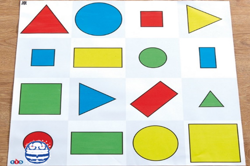Can AI guess your emotion?
Discuss emotions as a class, and introduce the idea of artificial intelligence (AI). This lesson can also be used to introduce image classification – a key application of AI. Developed in collaboration with Digital Technologies Institute.
Additional details
| Year band(s) | Foundation, 1-2, 3-4 |
|---|---|
| Content type | Lesson ideas |
| Format | Web page |
| Core and overarching concepts | Digital systems, Algorithms, Implementation (programming), Privacy and security, Data representation |
| Australian Curriculum Digital Technologies code(s) |
AC9TDIFK01
Recognise and explore digital systems (hardware and software) for a purpose
AC9TDI2K01
Identify and explore digital systems and their components for a purpose
AC9TDI4K01
Explore and describe a range of digital systems and their peripherals for a variety of purposes
AC9TDI4K02
Explore transmitting different types of data between digital systems
AC9TDIFK02
Represent data as objects, pictures and symbols
AC9TDI2K02
Represent data as pictures, symbols, numbers and words
AC9TDI4K03
Recognise different types of data and explore how the same data can be represented differently depending on the purpose
AC9TDI2P03
Discuss how existing digital systems satisfy identified needs for known users
AC9TDI4P05
Discuss how existing and student solutions satisfy the design criteria and user stories
AC9TDI2P02
Follow and describe algorithms involving a sequence of steps, branching (decisions) and iteration (repetition)
AC9TDI4P01
Define problems with given design criteria and by co-creating user stories
AC9TDI4P02
Follow and describe algorithms involving sequencing, comparison operators (branching) and iteration |
| Technologies & Programming Languages | Artificial Intelligence |
| Keywords | Artificial Intelligence, Facial recognition, emotions, AI, artificial, intelligence, teachable machine, data representation, algorithms, problem solving, digital systems |
| Integrated, cross-curriculum, special needs | HPE |
| Organisation | ESA |
| Copyright | Creative Commons Attribution 4.0, unless otherwise indicated. |
Related resources
-

Makey Makey Projects for Years 4-6
These lesson ideas demonstrate how to combine Makey Makey together with Scratch to create all sorts of interesting solutions with students, as well as teach the basics of circuity, conductive materials and algorithms.
-

Blue-Bot challenges
Use these challenges created by Kylie Docherty, QSITE to provide opportunities for students to learn how to design and follow a series of steps to program Blue-Bot.
-

Bee Bot Balloon Pop
During this lesson, students will be required to consider the functions of the Bee-Bot and how a user can interact with this device.
-

CAS Barefoot
A broad collection of online resources to support teachers to develop and implement computational thinking, concepts and computer programming.
-

Coding in the Classroom
Through this website, educators can explore and share resources and strategies to teach coding.
-

eSafety Commissioner: Video and resource library
Online safety resources for secondary schools supported by lesson plans and multimedia resources. Use the filters to find tailored resources suitable for your classroom needs.
-

Computing at School: Resources
Browse the curriculum resources which are tried and classroom tested resources submitted by primary teachers to support Computing for early to middle primary school.
-

Digital Citizenship Unplugged
This site provides a structured lesson plan to teach Digital Citizenship to primary-aged students.
